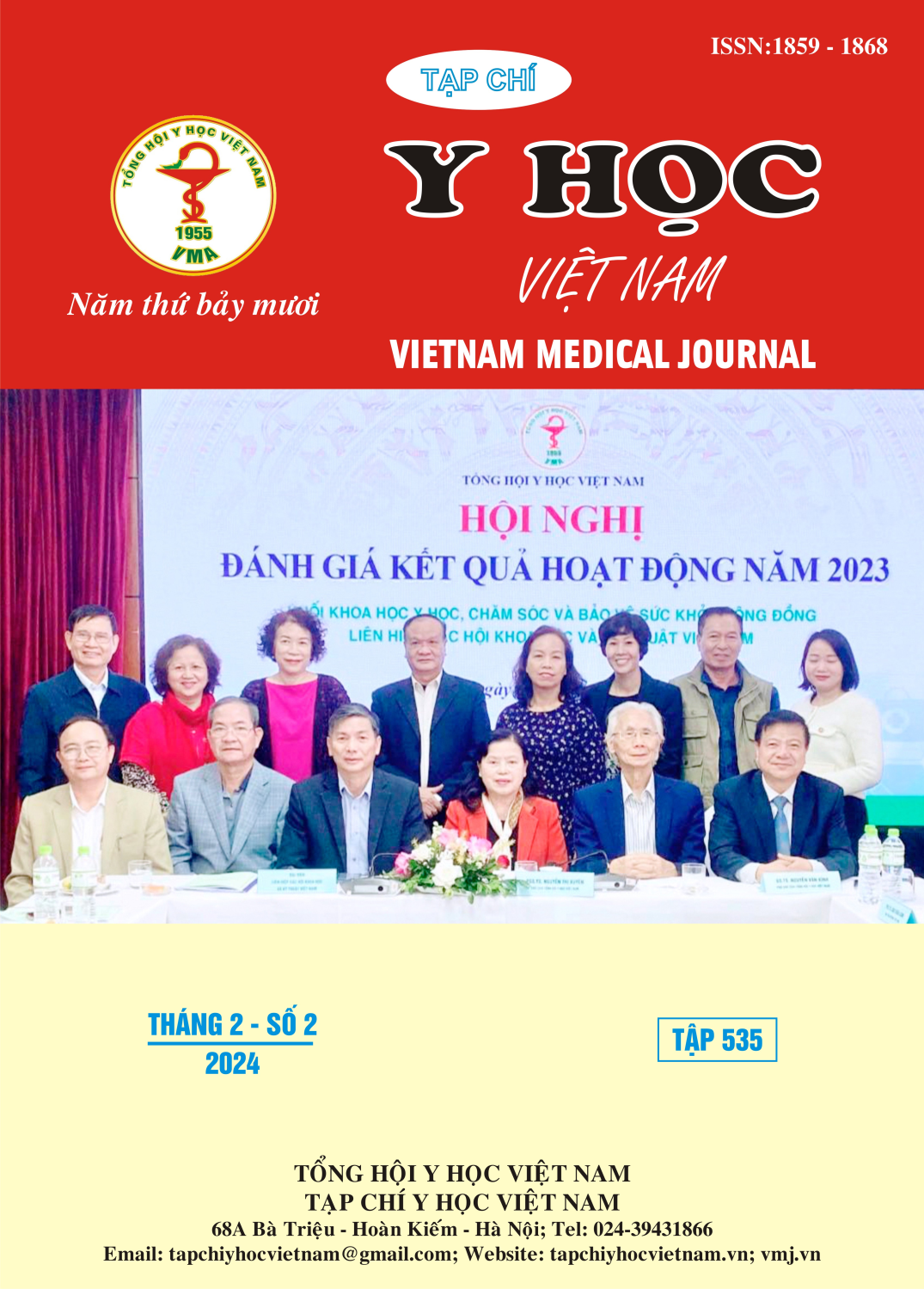CLINICAL OF REFRACTORY GLAUCOMA PATIENTS UNDERGO MICROPULSE TRANSSCLERAL CYCLOPHOTOCOAGULATION PLUS
Main Article Content
Abstract
Background: Refractory glaucoma is a complication that can occur in all types of glaucoma. Among them, secondary glaucoma such as neovascular glaucoma, pseudoexfoliation glaucoma, post-uveitis glaucoma, intraocular silicon glaucoma... have a higher treatment resistance rate than primary glaucoma. Refractory glaucoma is a challenge for ophthalmologists. The disease can progress, leading to permanent blindness or pain that affects the patient's life. At that time, ciliary body destruction can be proposed and the method of implementation is additional transscleral ciliary micropulse photocoagulation (MTSCPC_Plus-Micropulse transcleral cyclophotocoagulation Plus) using a diode laser (810 nm) combining 2 techniques for intraocular pressure lowering. To understand the group of patients with treatment-resistant glaucoma who perform this laser. Therefore, we conducted a survey of epidemiological and clinical characteristics in patients with refractory glaucoma undergoing MTSCPC_plus. Objective: Describe the clinical characteristics of refractory glaucoma undergoing micropulse transscleral photocoagulation plus. Methods: Descriptive cross-sectional study involved 39 patients refractory glaucoma. Results: The study included 39 eyes with refractory glaucoma, average age was 55.15 ± 12.87 years, male accounted for 53.8%. 79.3% of eyes had secondary glaucoma, of which neovascular glaucoma accounted for the majority (51.6%). The majority of eyes have not had surgery before, 74.4%. Visual acuity from no perception of light to count fingers <1m. The average intraocular pressure was 36.93 ± 10.61mmHg. All diseases have CDR = 1.0. The level of preoperative pain recorded ranged from mild (3/39), moderate (27/39) to severe (9/39). The average number of antihypertensive drugs used was 2.95 ± 0.22 drugs. Conclusions: The group of patients with refractory glaucoma undergoing micropulse transscleral photocoagulation plus is mostly older patients, men, neovascular glaucoma accounts for the majority of secondary glaucoma, and almost eyes are in a stage state. Severe, with poor vision, eye pressure does not reach target eye pressure despite maximum medical treatment and surgery. In addition, refractory glaucoma also causes pain for patients, affecting their quality of life.
Article Details
Keywords
refractory glaucoma, photocoagulation plus, clinical characteristics
References
2. Aquino, M. C., et al. (2015), "Micropulse versus continuous wave transscleral diode cyclophotocoagulation in refractory glaucoma: a randomized exploratory study", Clin Exp Ophthalmol. 43(1), pp. 40-6.
3. Benhatchi, N., Bensmail, D., and Lachkar, Y. (2019), "Benefits of SubCyclo Laser Therapy Guided by High-frequency Ultrasound Biomicroscopy in Patients With Refractory Glaucoma", J Glaucoma. 28(6), pp. 535-539.
4. Preda, M. A., et al. (2020), "Clinical outcomes of micropulse transscleral cyclophotocoagulation in refractory glaucoma-18 months follow-up", Lasers Med Sci. 35(7), pp. 1487-1491.
5. Sarrafpour, S., et al. (2019), "Micropulse Transscleral Cyclophotocoagulation: A Look at Long-Term Effectiveness and Outcomes", Ophthalmol Glaucoma. 2(3), pp. 167-171.
6. Tan, A. M., et al. (2010), "Micropulse transscleral diode laser cyclophotocoagulation in the treatment of refractory glaucoma", Clin Exp Ophthalmol. 38(3), pp. 266-72.
7. Williams, A. L., et al. (2018), "Clinical Efficacy and Safety Profile of Micropulse Transscleral Cyclophotocoagulation in Refractory Glaucoma", J Glaucoma. 27(5), pp. 445-449.
8. Wong, K. Y. T., et al. (2020), "MP3 Plus: A Modified Micropulse Transscleral Cyclophototherapy Technique for the Treatment of Refractory Glaucoma", J Glaucoma. 29(4), pp. 264-270.
9. Zaarour, K., et al. (2019), "Outcomes of Micropulse Transscleral Cyclophotocoagulation in Uncontrolled Glaucoma Patients", J Glaucoma. 28(3), pp. 270-275.


